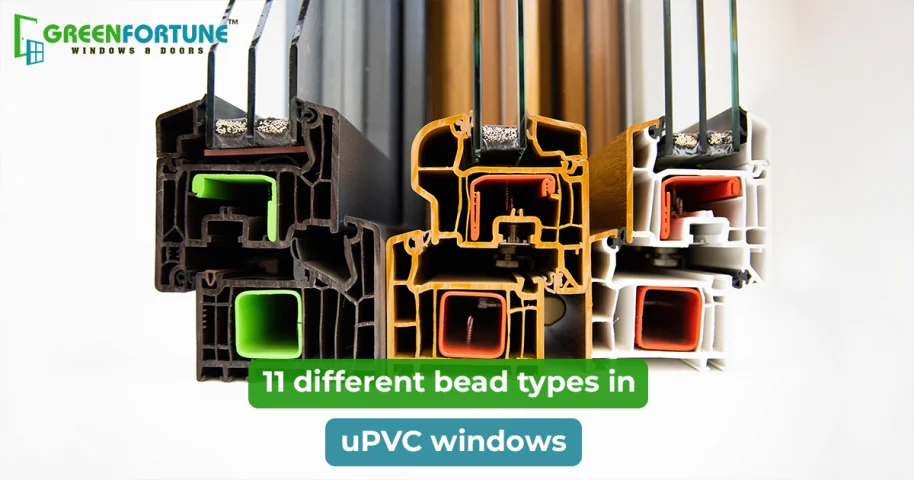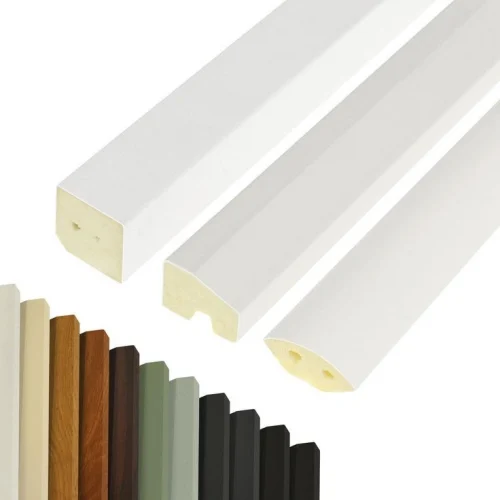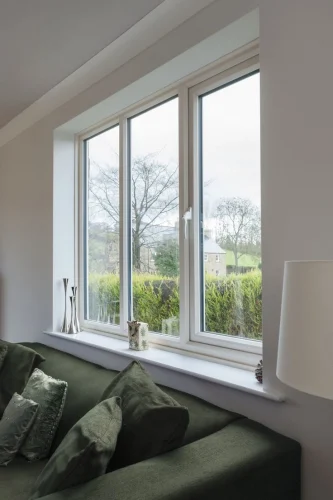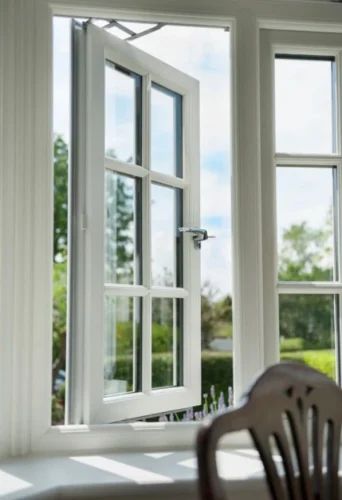
Are uPVC Windows for Coastal Areas Really Worth It? We Found Out!
June 12, 2025
Purv Mukhi Vastu Guidelines: Do’s and Don’ts for East-Facing Homes
June 13, 2025If you are choosing uPVC windows, the frame, the colour, the type of glass or even the types of beads in uPVC windows should probably be the things you will focus on. But there’s one more tiny thing often overlooked, but equally important the bead, also known as a glazing bead.
If you are wondering what they are, beads are slim strips of uPVC that hold the glass in place inside the window frame. They act as an invisible lock between the glass and the frame.
In this blog, we will explore the types of beads in uPVC windows. Let’s get started!
Also read: A guide to choosing the best uPVC windows and doors.
Different Types of Beads in uPVC Windows
We have categorised the 11 different types of beads in uPVC windows, based on their position, installation type, performance and looks.
Based on Position: Internal Vs External Beads
Internal beads
The internal beads are placed on the inner side of the window and are not accessible from the outside. This makes it more secure because no one can just pop the glass out from outside the house.
Internal beading also makes glass replacements or repairs easier since everything is done from the inside. It is best suitable for urban areas and ground-floor homes. This is one of the commonly used types of beads in uPVC windows.
External beads
The external beads are fitted on the outer frame of the window. While it does its job of holding the glass, it comes with a major drawback- it can be removed from the outside. That means it’s easier to break in or damage, making it less secure.
External beading is mostly seen in older designs or very budget-friendly window systems.
Beads Based On Installation Types
Clip-on beads
Clip-on beads are designed for a sleek, modern look. Instead of screws or manual fitting, these beads simple snap into place along the frame. They give a clean, uniform finish without any visible joints or hardware.
That’s the reason they are one of the commonly used types of beads in uPVC windows (premium or custom-designed frames). They are easy to remove and refit too, making them easy to clean or during glass replacement.
Push-in beads
Push-in beads are fitted by manually pressing them into pre-grooved tracks in the window frame. These are very common in everyday window designs because they are cost-effective.
But the drawback is, they are a bit difficult to remove. So, if the glass needs to be changed later, you will require a technician.
Screw-in beads
Screw-in beads are the most secure and rigid option. They are physically attached to the window frame using small screws and usually covered with a cap or finish strip.
They are great for large glass panels and commercial spaces, which require more strength and stability. But they take a longer time to install or remove; otherwise, it’s great.
Beads Based On Performance
Gasket beads (Co-extruded beads)
Gasket beads are the most advanced types of beads because they come with a built-in rubber gasket.
This rubber part hugs the glass tightly, creating an airtight and watertight seal, making it perfect for coastal areas, rain-prone regions or places where noise reduction is a priority.
Also read: Why uPVC windows are better than aluminium windows?
Double glazing beads
Double-glazed beads are designed to hold double-glazed units, meaning two glass panes with a spacer in between. These beads are deeper and wider than the standard beads. They are usually paired with energy-efficient or soundproof windows.
Pro tip: Double-glazed beadings work the best when paired with internal beading and gasket seals.
Triple glazing beads
Triple glazing beads are used in high-performance homes and offices. They are made to hold three layers of glass, which makes them thicker and heavier. They are not common in India yet.
These triple-glazing beads are used only where maximum insulation is needed, like extremely cold climates or recording studios.
Beads Based On Looks
Chamfered beads
Chamfered beads have slightly slanted edges, which gives the windows a sharp, clean finish. More than the looks, the slant helps water run off more easily and reduces dirt buildup.
These are one of the commonly used types of beads in uPVC windows because they work well with both white and wood-finish frames.
Ovolo beads
Ovolo beads are curved and perfect for people who like a bit of traditional elegance. They are great for homes with arch-shaped windows, colonial design, and vintage-style interiors.
Square beads
Square beads have a flat, boxy edge. They give windows a very minimal and modern look, which fits well in both boxy and linear architecture. These beads are common in contemporary flats and homes that follow a clean, functional style.
If you are wondering which glazing bead styles are right for your home, think about functionality and look.
At GreenFortune, we work with uPVC windows and doors every single day, right from design and manufacturing to on-site installations. We have seen which bead type works the best in Indian homes, in real weather, with real usage. So, connect with the uPVC experts of GreenFortune to choose which bead suits your home the best.
Final Takeaway
Here you have- the 11 different types of beads in uPVC windows. Even though beads are a small part of your uPVC windows, they make a huge difference in safety, performance and looks. With so many window beading options today, make the right choice by choosing the one that matches your home’s needs. Never ever compromise on quality!
FAQs
1) Can you replace uPVC beading?
Yes, uPVC beading can be replaced without removing the whole window. A technician can carefully take it out and refit it with a new one if it’s cracked, loose, or damaged. While replacing, make sure it's the right bead profile for your window frame.
2) How to get uPVC window beads in?
uPVC window beads are either pushed, snapped or screwed into a groove inside the window frame to lock the glass. Depending on the type, a technician used light tapping tools or clip-on features to secure the bead tightly without damaging the glass.
3) What are the two types of glaze?
The two types of window glazing are single glazing and double glazing. Single glazing uses one pane of glass, while double glazing uses two panes with a spacer in between, for better insulation and sound control.










